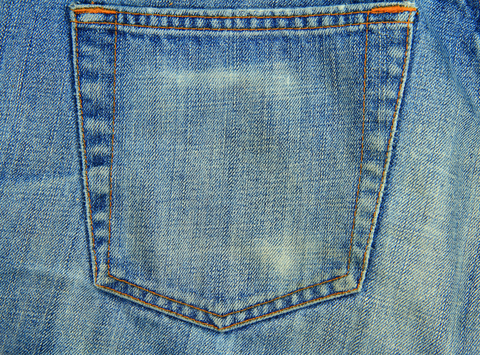| www.FlowBlueJeans.com | www.FlowResearch.com |
Jeans Manufacturing Processes
Source: Wikipedia.org
Dyeing
Traditionally, jeans are dyed to a blue color using an indigo dye. Approximately 20 thousand tons of indigo are produced annually for this purpose, though only a few grams of the dye are required for each pair. Some other colors that can be achieved are pink, yellow, black, and white.
For more information on dyeing, refer to denim and the discussion there of using pigment dyes.
Pre-shrinking of jeans

Young people wearing a variety of jean styles, including carpenter jeans, bootcut jeans, drainpipe jeans and lowrise jeans. (Rome, 2008) |
Levi Strauss first marketed preshrunk jeans, which did not shrink further after purchase, allowing the consumer to buy his or her correct size, in 1963. These jeans were known as the 505 regular fit jeans. The 505 are almost identical to the 501s with the exception of the button-fly. The Levi's corporation also came out with a slim bootcut fit known as 517 and 527. The difference between the two is 517 sit at the waist line and the 527 sit below the waist line. Later on, Levi's would develop other styles and fits such as the loose, slim, comfort, relaxed, skinny, and a regular fit with a tapered leg.

The used or "acid wash" look is created by means of abrading the jeans and/or treating them with chemicals, such as acryl resin, phenol, a hypochlorite, potassium permanganate, caustic soda, acids etc.
Sandblasting or abrading with sandpaper
Consumers wanting jeans that appear worn can buy jeans that have been specially treated. To give the fabrics the worn look, sandblasting or abrading with sandpaper is often done.
Environmental and humanitarian impact
A typical pair of blue jeans consumes 919 gallons of water during its life cycle (this includes the water to irrigate the cotton crop, manufacture the jeans, and the numerous washes by the consumer).
The production of jeans with a "used look" can be more environmentally damaging than regular jeans (depending on how the waste compounds are processed). Sandblasting and treating with sandpaper has the risk of causing silicosis to the workers, and in Turkey, more than 5,000 workers in the textile industry have been stricken with this disease, and 46 people are known to have died. Some companies have announced they are banning the use of sandblasting.
Sponsored by:
27 Water Street
Wakefield, MA 01880
(781) 245-3200
(781) 224-7552 (fax)
info@flowresearch.com